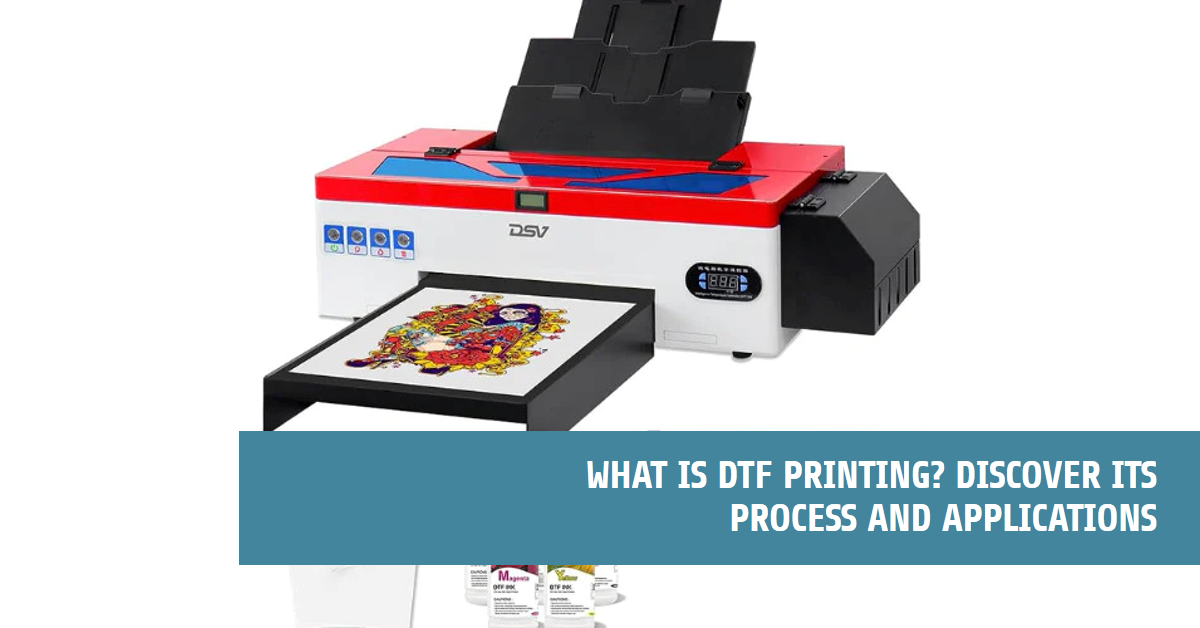What is a DTF Printing?
DTF printing stands for direct-to-film printing. It is a technique used to transfer designs onto T-shirts, cotton, polyester, or their blends, regardless of their color, using a desktop inkjet printer equipped with textile inks specially designed for DTF printing. The process involves printing the design directly onto a film and then transferring it to the fabric using a heat-press mechanism.
DTF printing has a slightly "plastic" finish, similar to HTV or screen print transfers, but the inks used are very elastic, which prevents the print from cracking when the garment is stretched. DTF printing is perfect for anyone looking to include T-shirt personalization or any other textile product (cushion covers, masks, bags, sweatshirts, etc.) into their cotton or polyester.
How DTF Printing is Different from Other Printing Methods

DTF printing, or Direct-to-Film printing, is a relatively new printing method that has gained popularity in recent years. It differs from other printing methods in several ways.
Firstly, DTF printing uses a special type of film as the printing medium, instead of traditional transfer paper or vinyl. This film is coated with a layer of adhesive that allows it to stick to the garment or substrate being printed on.
Secondly, DTF printing uses a specialized printer that is capable of printing directly onto the film. This eliminates the need for a separate transfer process, which is required in other printing methods such as screen printing or heat transfer vinyl.
Thirdly, DTF printing allows for a wider range of colors and designs to be printed, as it uses a CMYK+W (white) ink set that can produce vibrant and detailed prints. This is in contrast to other printing methods that may have limitations in terms of color accuracy or design complexity.
Finally, DTF printing is a relatively fast and efficient printing method, as it can produce high-quality prints in a shorter amount of time compared to other methods. This makes it a popular choice for businesses that require quick turnaround times for their printing needs.
Overall, DTF printing offers a unique set of advantages that make it a viable alternative to other printing methods. Its ability to produce high-quality, vibrant prints quickly and efficiently has made it a popular choice for businesses and individuals alike.
How Does DTF Printing Work?
The process of DTF printing involves the following steps:
Design creation: The design is created using software like Adobe Illustrator or Photoshop.
Printing: The design is printed onto a piece of PET film using a desktop inkjet printer equipped with textile inks specially designed for DTF printing.
Transfer: The printed PET film is placed onto the garment or substrate and transferred using a heat press.
Finishing: The finished product has a slightly "plastic" finish, similar to HTV or screen print transfers, but the inks are very elastic, which prevents the print from cracking when the garment is stretched.
What Equipment is Needed for DTF Printing?

To perform DTF printing, you will need the following equipment:
Desktop inkjet printer: A printer equipped with textile inks specially designed for DTF printing is required. Some popular DTF printers include the DTF PRO L1800, P640, P600, XP15000, and more.
PET film: A piece of PET film with a special coating that helps transfer the design onto fabric or other substrates using a heat-press mechanism is required. If you want to know about PET film, be sure to check our blog about " What is a PET film".
Textile inks: Water-based textile inks specially designed for DTF printing are required.
Heat press: A heat press is used to transfer the printed PET film onto the garment or substrate.
DTF powder shaker: A DTF powder shaker is used to apply a layer of powder adhesive onto the printed PET film.
Safety equipment: It is important to wear safety equipment like protective eyewear, masks, and gloves when working with DTF products.
What are The Advantages of DTF Printing over Other Printing Techniques?
DTF printing offers several advantages over other printing techniques, including:
Versatility: DTF printing can be used on a wide variety of materials, including cotton, polyester, and blends, as well as hard substrates like wood, metal, and plastic.
Durability: DTF prints are more washable than DTG prints, as the DTF inks used in DTF printing are more elastic and less likely to crack or fade over time.
Vibrant colors: DTF printing allows for very exact ink quantities, resulting in vibrant colors, opaque whites, and remarkably sharp and fine edges.
Ability to print on dark garments: Unlike DTG printing, which only works on white or light-colored garments, DTF printing can print on any color garment.
Low production costs: DTF printing is a cost-effective printing method, as it requires fewer steps and less equipment than other printing techniques.
No need for pretreatment: DTF printing does not require pretreatment, which is a necessary step in DTG printing that can be time-consuming and costly.
Easy set-up: DTF printing is relatively easy to set up and use compared to some other printing methods.
What Kind of Printers are Used for DTF Printing?

The most commonly used printers for DTF printing are Epson desktop inkjet printers, such as the Epson L1800, L1300, L805, and P600. These printers are often called DTF Modified Printers. DTF transfers require the ability to print both colors and white ink.
For at-home DTF printing, the Prestige A3+ DTF Printer is highly recommended because it prints white, has a small footprint, and is easy to use. Other compatible printers for DTF printing include Epson Stylus Photo R2000, Epson Stylus Photo R3000, Epson Surecolor P400, and Epson Surecolor P800.
What are the Best Practices to Uses DTF Printing?
Here are some best practices for DTF printing:
- Use an inline fan to suck fumes and ensure good ventilation.
- Shake all ink bottles before use to ensure that the ink is well mixed. Ensure that the DTF hot melt powder is not damp and store it in a closed container to avoid prolonged exposure to air.
- Use a desktop inkjet printer equipped with textile inks specially designed for DTF printing, such as Epson L1800, L1300, L805, and P600.
- Print your design onto a film and then transfer it to a T-shirt made of cotton, polyester, or their blends.
- Use vibrant and accurate colors to ensure the best hand.
- DTF has a slightly “plastic” finish, very similar to HTV or screen print transfers. However, the inks are very elastic, which prevents the print from cracking when the garment is stretched.
- DTF printing is perfect for anyone looking to include T-shirt personalization, or any other textile product (cushion covers, masks, bags, sweatshirts, etc.) into their cotton or polyester.
- Implement best practices for design to ensure your DTF garment stands out.

